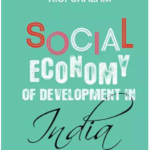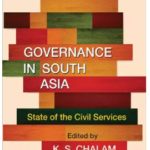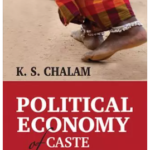The debate over globalization is taking a new twist ever since some of the anti-global and hostile LPG groups speaking differently after 2008. The emergence of China as a super power made some of those on the fence to argue that economic globalization has enabled the World to create more wealth and some of the underutilized resources are being fully utilized and therefore there is no need to oppose it. Nevertheless, Human globalization as part of human evolution took place some sixty thousand years back and the present generation is only a continuation of the process but, it was never a threat to human survival. Globalization in the form of mercantilist and colonial expansion and later had emerged as Imperialism dominating nations as predators was considered by some experts as a perilous era. We are going to discuss about the evil affects of the overwhelming influence of economic globalization particularly the American influence over the rest of the World not only in economic practices but also their corresponding social and cultural ramifications that destroy the identity of nations. It is in this context, the American subprime crisis is analysed below.
American capitalist development has entered a new era when it became an imperialist country by regulating countries either through its finance capital or through its political manipulations. Dollar has emerged as an imperial currency when it became world’s reference currency through Bretton Woods’s institutions in 1944. Though some currencies like Euro, Yen, Renminbi (yuan) are being accepted as exchange currencies, US dollar now predominate the international market. Therefore, one needs to look at the power of the currency in terms of the transactions made through it in international transactions. The repercussions of economic interlinks within the country through the medium of dollar would also have wide and global repercussions due to its contacts. We are now trying to understand how the US has emerged as a World leader through the maneuvering of its financial markets and how its internal manipulations led to an economic crisis in 2008. We can understand this if we know the nature and character of economic imperialism. Students of Economics know that Imperialism is not purely a political system but an economic paradigm. Though Hobson has considered it as a socio-economic phenomenon, Lenin had elaborated it as the highest stage of international division of labour supported by finance capital. It is in this context, we may cite what Lenin has said about Imperialism exactly a century ago in 1916. He has said that there are five essential features that need to be satisfied for a modern imperialism to exist. They are;
- The concentration of production and capital developed to such a high stage that it created monopolies, which play a decisive role in economic life.
- The merging of bank capital with industrial capital, and the creation, on the basis of this “finance capital,” of a “financial oligarchy.”
- The export of capital, which has become extremely important, as distinguished from the export of commodities.
- The formation of international capitalist monopolies, which share the world among themselves.
- The territorial division of the whole world among the greatest capitalist powers is completed.
Elaborating on Lenin, Bukharin has said that imperialism is the result of two conflicting tendencies in modern capitalism. Competition tends to give rise to the concentration and centralization of capital, and as this process develops, the state comes to play an increasingly active role in managing the economy. Bukharin further argued that there is, in fact, a tendency for capital and the state to merge together on the national level to form what he called “state capitalist trusts.” We have seen in 2008 how US government has bailed out the capitalists through a government package with taxpayer’s money. Exactly the same way the Government of India has announced the so called recapitalisation of banks in India a few weeks ago. Therefore we need to evaluate both the phenomena as similar or different.
The economic parameters of the world with regard to the USA clearly indicate that all the five factors noted by Lenin a century ago are fully in place. There are several studies to show that the World is divided in to economic blocks and the capitalist west particularly the OECD group is being engaged in this task. The predominance of finance capital and its influence on the economic transactions in the World is well known. We can notice that there is a change in the sources of GDP in most of the countries where service sector and the manufacturing and agriculture are being reduced to less than 20 per cent of it. If we look at the movement of finance capital in different forms in the World and through the share market operations and speculative investments, the command and control of financial transnational corporations whose transactions are worth more than the GDP of some countries, the trends would be clear. As Ludwig Von Mises the doyen of Capitalism noted that a stock market is an essential element of capitalism along with private property, we shall try to look at it here in terms of its size. It is noted that the transactions of Walmart ($485 bln), Berkshire Hathway ($223bln), Apple ($215bln) Exon Mobil ($205bln), Allianz ($140), JP Morgan ($108), Bank of America ($100bln) etc figure in the list of giant companies in the World. The top MNCs in the World in terms of market capitalisation come from America with $10928 bln and China is a distant second with$1801 followed by UK $721 bln in 2017 (PwC) , evidently indicating the lead of America. The figures point out that the GDP of each of more than 100 countries in the World is less than a single MNC. They have their presence in almost all the courtiers in the World. India is a favourite destination after P.V.NarasimhaRao opened the economy in 1991. The role of share market in terms of market capitalisation as a proportion of GDP was 5.9 per cent in 1975 has become 126.6 per cent in the World by 2017 as per the World Bank data sets. India was not figured in this factor in 1975 and by 2016 it reached 35 per cent of GDP.
The subprime crisis in the USA in 2008 had been attributed by a section of the scholars to mindless derivative and real estate boom. However, they did not realise the fact that twenty first century capitalism would not survive without such temporary and piecemeal tinkering. The economic globalisation of corporate capitalism has survived with the support of international agencies like WTO, World Bank, IMF etc, that oversee the functioning of the system through trade and other economic linkages. America had survived the 1929 crisis with state support through pump priming and 2008 shock with a $700 bln bail out plus $ 787 bln stimulus package. It has exposed the conspiracy of the Neo-imperialist forces to capture the world economy by deceit through the so called monetary policy of IMF and World Bank. It is reported that the Dow Jon’s Stock Market Index reached 14000 points in 2007 due to the financial manipulations of dishonest bankers in the USA and crumbled to 6600 by 2009. It is estimated by Goldman Sachs that every $100 billion loss would result in a corresponding reduction in$1 trillion bank lending. This had adversely affected consumption and business investments in the US and resulted in Great Recession. This was all due to five important financial giants who control power to regulate not only the American economy but the World as a whole through their operations. They are; Lehman Bros, Merrill Lynch, J.P Morgan Chase, Morgan Stanley, Goldman Sachs and few others. However, they have attributed the debacle to Housing mortgage companies like Fannie Mae and Freddie Mac in USA who were alleged to be responsible for US credit default swaps. Several millions of middle class and poor Americans lost their savings and the Federal system was forced to enter the market and announced economic stimulus package of $ 787 billion in 2008 and again $850 billion in 2009 to infuse investors’ confidence to halt the collapse of the American Capitalism.
The crisis was so huge that it had adversely affected several European countries like Iceland, Greece, Spain, Portugal and several others who had been brought under the orbit of monopoly capital of USA. In fact the top 500 billionaires of the World have close relations with American economy since 425 of them do originate from the US soil. There are also some Indian, Russian and other billionaires in this list. But it is predominantly an American phenomenon. The subprime crisis was found to be huge in terms of the value of the transactions in the derivatives market. It is estimated that it was around $12 trillion in the US economy of $20 trillion (nearly 60%). The world GDP itself was $60 trillion or the US strength was one third of it in 2016. Though China with $ 23194 bln PPP GDP surpassed America with $ 19417 billion PPP in 2017, it is still the largest in the World in nominal terms, with its tentacles spread far and wide.
But that does not mean the economy was out of danger as it has tried to transfer the crisis to other countries through a contagion effect. Several countries like Iceland declared bankruptcy and the Stock market indices were down first in the USA from 14000 to 13000 in a month. It was also reflected in India when the BSE sensex was down by -13.55 points around that period. Though the RBI Act has provided strong support for monetary policy to guard against such contagion and helped the financial sector to safeguard its interests, the Government of India made amendment to 1934 Act by creating a new Monetary Policy committee in 2016. It has given enough hints to Raghuram Rajan about the intentions of the government. The Demonetisation in the form of withdrawal of high valued notes of Rs 1000 and 500 to the extent of Rs 15.4 lakh crores on 8 November 2016 and the after affects are well-known to common man. What is not popularly revealed in the media discourse is that the Banking system and the economy had already subjected to contagion effect when the exports were down from Rs 19.05 lakh crores to Rs 18.52 lakh crores during 2014-2016, growth rates are down during the first quarter of 2017 etc. It was a reflection of the international financial meltdown. In fact the banks outstanding credit by 2016-17 was Rs 75.98 lakhs that included loans to real estate and other infrastructure projects that are now considered as dubious and have contributed to NPA. The RBI has given the list of Banks whose NPA was Rs 8.29 lakh crores ( Rs 12 lkh crores). Now the Finance Minister has come out with Rs 2.11 lakh crore recapitalisation funds to stimulate banks. What does it mean? Already FDIs to the extent of Rs 18.54 lakh crores mostly in the service sector like real estate, banking etc and the FIIs investments clearly show that Indian economy is now experiencing the same pain as the American mother had undergone in 2008.
The contagion effect of subprime crisis of USA could be seen happening in India after a gap of 6-7 years, the period in which the economy was managed by economists. As noted above, there is an intimate and direct link between Indian economy and USA in the form of trade, investments, remittances etc. How could we remain untouched by the American or European capitalist crisis? In fact it had its markers in several economic parameters such as lowering of proportion of GDP from agriculture and manufacturing with increasing trends of contributions from service sector. Foreign direct Investment FDI during the period 200-2017 is reported to be Rs 18.54 lakh crores mostly from premier and mid-range tax havens. It is shown by the Ministry of Commerce, Industrial Policy and promotion that 51 per cent of total FDIs during the period came from Mauritius (33.57) and Singapore (16.82). Further these investments came in to the service sector like Finance, IT, Real estate, Trading, telecom etc. It had an adverse impact on the industrial development of the country as its contribution did not cross 30 per cent and agriculture where more than 60 per cent of the population of India depend is found declining (17%). The over emphasis given to financial services and monetary transactions seem to have reflected in the reserve money, currency in circulation and broad money over a period of time. It is estimated that the growth of currency in circulation during 1970-2001 is 7 per cent, and during 2001 – 2016 is 69 per cent. It can be seen the phenomenal growth of broad money that includes time deposits and narrow money from Rs 144568 to Rs 12844386 that led to a bank credit of Rs 7598482 crores. Most of the credit is gone in to dubious investments mostly in to real estate, infrastructure and other service sectors like transport ( like Kingfisher ). It was found in 2010 RBI data that Rs 16 lakh crores credit was given to real estate indicating the pressure on the economy emanating from 2010 onwards or around the American crisis period. Scholars have estimated that IR, interest coverage ratio of less than 1, profitability less than 0 and debt equity ratio above 5 of firms during 2011 -2015 have increased from less than 15 per cent to more than 35 per cent. There was lot of pressure on the banking sector and also on RBI not to announce the names of NPAs. But, the government had to announce the so called demonetisation on 8 November 2016 to withdraw Rs 1000 and Rs 500 notes worth Rs 15.4 lakh crores with a dubious idea of reducing corruption seem to be a ploy to divert the attention of the public from a subprime like crisis in India to reduce the circulation of currency to reduce interest rates. But this did not give the expected results rather harmed the system and society with around 100 deaths.
Demonetisation has adversely affected the transactions in the small scale sector particularly in the rural economy. The impact of the same on the stocks of perishable goods due to non-availability of cash multiplied extending the same to other sectors and other areas. It is reported that there was job loss of 35 per cent and income by 50 per cent during the period. It has cumulative effect. In fact the size of the public sector was slowly reduced to give scope for private sector and dubious transactions have taken place in the name of corporate activities. The corporate frauds and their influence on the political system and on policy mechanism could be seen in the name of policy paralysis. Interestingly those who were responsible for this condition have themselves termed it as paralysis and resorted to corporate frauds. The size of the public corporate sector has substantially declined from 73 per cent in 1989 to 6 per cent by 2016 with overemphasis only on business services, trade, finance and less on manufacturing sectors to reap huge profits and windfalls at the cost of our depleting natural resources. Around 2 lakh companies were declared non-functional and bogus that used to park black money, however not affected by demonetisation as their transactions were all conducted in digital mode . In fact the number of places of worship and Trusts has been trebled during the period as they turned out to be conduits of ill-gotten money with immunity from tax sleuths. This has helped both the political parties in power and the corporates.
The aftermath of demonetisation became transparent for those who were meddling with cash warning that the crisis is at the door step of banking sector. The solution of recapitalisation with 2.11 lakh crores announced by the Finance Minister for the NPAs of 8.29 lakh crores of scheduled banks mostly public sector banks, is similar to that of US bailout package. What does it mean? It is definitely a crisis where the state and the financial institutions conspire against the common man and swap their earnings in the form of taxes and shrink public investment in education, health and subsidies. The adverse effect of demonetisation on the rate of growth of GDP, loss of income and jobs in MSME are estimated to be substantial. Thus the economic crisis of capitalism either in USA or in India with similar characteristics might buy some time with public money and saved labour power of working classes, but would sooner or later face the eventuality.
It is the responsibility of the thinkers and activists to understand the transformation of imperialism in the form of MNCs operations in meddling with national governments and their polices including price determination, mergers, political funding, cultural hegemony and identity of independent nations. It is only through constant intellectual dialogue with common man, we will be able to withstand the onslaught of imperialism and I hope that this conference would deliberate on these issues for a meaningful outcome that would enable informed debates.
(Slightly modified Presidential address delivered at ICSSR National Seminar on “Globalization, Finance Capital and Markets: Impact on India” organised jointly by AIPF and Parvatibhai Chowgulee (A) College, Goa, 1-3 December, 2017)



